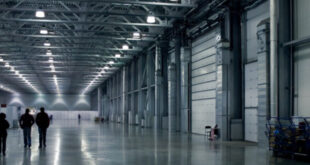People will eventually return to the office, and when they do, the office is going to look a lot different. Some who have discovered the advantages of working at home won’t want to return.
Sooner or later, the COVID-19 crisis will pass and workers will return to the office. Some of them, anyway.
Others might decide to keep working out of their house, something they will have gotten used to and grown to like during the pandemic. That’s assuming their employer will agree to let them do so.
And those that do go back won’t return to the same environment they left in March or April, when the full impact of the COVID-19 pandemic began to be felt and most people began staying in their house as much as possible.
The office, which was undergoing changes before the COVID-19 happened, is likely to look very different – and probably will be changed permanently – because of this global public health catastrophe, said Jerry Holdner, a real estate consultant with longtime ties to the Inland Empire office and industrial markets.
“It’s definitely not going back to the old normal,” Holdner said. “I’m hearing talk about more partitions in offices, and higher cubicles, which were going away but now they’re going to come back bigger than they were before. That way, if people sneeze or cough, the germs won’t get spread around, they’ll stay in the cubicle. Also, people are going to be more spread out, not close together like before, to reduce the chance of infection.
“It will be a new normal, although it’s impossible to predict now exactly what it will look like.”
Whatever form it takes, the “new normal” will likely include fewer people working in the office and more people working at home.
A recent article by Forbes magazine, which predicts the outright demise on movie theaters and some department store chains in two to five years, says the virus will be a “game-changer” regarding people working from home.
Tens of millions of people worldwide are working out of their residence for the first time, and they’re learning how much they can get done remotely. They’ve probably figured out already, after only one or two months, that they can be just as productive at home, if not more so.
The article further speculates that many of those workers, especially the ones who live in a heavily populated area like Los Angles or Orange County, will be wondering why they’re commuting to work every day. For many, working out of their house two or three times a day will become their regular routine.
Offices won’t be empty, but the number of people working from home at least some of the time could rise by as much as 30 percent, according to Forbes.
That empty space will cause presidents and chief executive to look for ways to cut their rents, starting with leasing less office space.
Put another way, days of renting hyper-expensive, fancy office space in major metropolitan areas might be finished for some companies.
“It’s true that in some jobs, like telemarketer, you don’t need a lot of face-to-face contact among employees,” said Robert Kleinhenz, a former economist with UC Riverside School of Business’ Center for Economic Forecasting and Development who now runs a consulting business out of his Long Beach home. “In something like that, I think you’ll see a lot of people working out of the house.”
COVID-19’s affect on the U.S. economy will be much like the 9/11 terrorist attacks, which devastated several sectors of the economy, most of all travel and hospitality, according to Kleinhenz said.
“It had a chilling affect, and it took about two years before people started flying on airplanes again like they did before,” Kleinhenz said. “With COVID-19 I think it’s going to be the same kind of slow recovery. In the case of the office market, I think it’s going to take a lot of ingenuity, once things reopen, to create an environment where people will be safe and still be able to get their work done.”
With less paper and smaller equipment, offices were getting smaller before COVID-19, Kleinhenz said.
“I can see people alternating days, where they take turns working out of the home one or two days a week,” Kleinhenz said. “How long that will last is impossible to say. Some people will be able to do it, but there are jobs where people need face-to-face interaction.”
The Inland office market was on a long run of slow improvement before COVD-19 hit.
Vacancy was 8.6 percent at the end of the first quarter, its lowest point since the first quarter of 2006, according to CBRE.
The 110,921 square feet of net absorption recorded was an increase of 93,000 square feet from the first quarter of 2019, and the highest net absorption rate in the Inland Empire since the third quarter of 2018.
Construction – 147,000 square feet – and average lease rates – $2.05 per square foot – were flat, CBRE reported.
Those numbers aren’t likely to last.
“There will be downward pressure on lease rates to try to keep occupancy up,” Holdner said. “But the whole market will be predicated on jobs and how quickly people go back to work. We need to get to December or January before we’ll be able to tell where things are going.”
 IE Business Daily Business news for the Inland Empire.
IE Business Daily Business news for the Inland Empire.

